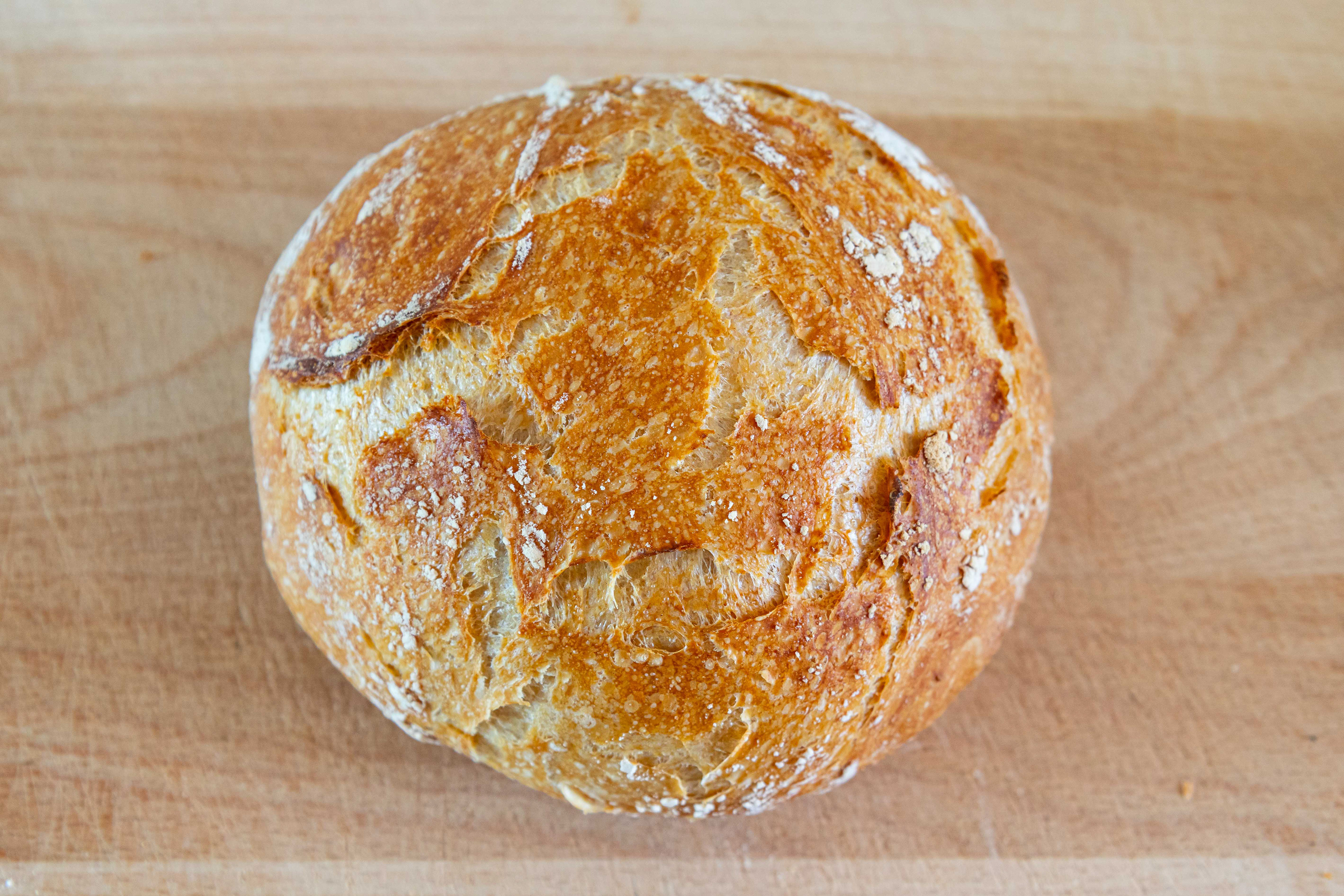(April 2020) Like many others caught in this strange thing called 'lockdown', I wondered what to do with myself on weekends. And like many others, I decided that baking would be my chosen hobby. I had a bag of white bread flour in the cupboard, some yeast, and nothing better to do.
After many failed attempts to make bread in the past, I enthusiastically consulted the internet for a recipe that didn't require much kneading (I lack both a kitchen gizmo that can do this for me, and the upper body strength to do it on my own), and found one that sounded perfect. Leave the mixture overnight, plop in a cast iron pot, bake for 45 minutes, and out comes crusty bread.
Sounded easy enough, so I did it.


Looks like bread. Tasted like bread too; in fact, it was quite delicious.
I had made a slight mistake though. When I baked the bread, I placed it seam side down. This wasn't a disaster; it simply meant that there were some hard, floury folds of bread trapped at the bottom.
My husband and I promptly devoured the whole loaf in a day, so it was clear that I needed to make more. However, I didn't have enough white bread flour left to make another loaf.
As it's currently a lockdown, we're not allowed leave the house unless we need to get food, groceries, or medicine. And even then, we need to keep those trips to a minimum. So I patiently waited until the next time I needed get some more food, and eagerly went to the baking aisle, only to be greeted with rows of empty shelves. In all our madness stocking up on toilet paper, it seems we should have stocked up on flour instead.
Back home, I rifled through the cupboard and found an old bag of brown wheat flour. The bag also also did not contain enough to make a full loaf, but I decided to mix it with what was left of the white bread flour and see what would happen.
This time, I cooked it seam side up. It looked very artisanal, I was quite chuffed with the result. That said, I don't think I'll use brown wheat flour again. It has hard bits. They hurt my teeth.
Ingredients
3 cups white bread flour
½ teaspoon yeast
1½ teaspoons salt
1½ cups water
Steps
1) Mix the dry ingredients together in a large bowl.
2) Add the water, and mix together until you get a sticky dough. Use your hands if you're feeling messy, use a spatula if you don't feel like peeling off bits of dough from your fingers the rest of the day.
3) Cover with a clingfilm and leave overnight (at least 12 hours).
4) Scrape the dough on to a well-floured surface.
5) Use your hands pull the dough together into a ball. You don't need to be too precise about this. The easiest way is to tuck the sides underneath.
6) Leave the dough to rest for an hour.
7) Preheat the oven to 230 degrees celsius.
8) Put a cast iron pot into the oven (completely empty at this point) and let it heat up for at least 30 minutes. Le Creuset is the obvious choice here, but I'm pretty sure other cast iron brands work well too. I used an 18cm Le Creuset round pot.
9) When the pot is preheated, take it out and put your dough inside, seam side up. (The seam is where you tucked the sides of the dough together, in step 5). You don't need to add any oil, flour, or weird non-stick stuff to the inside of the pot. It won't stick.
10) Put the lid on and bake for 30 minutes.
11) Remove the lid and put the pot back in the oven for another 15 minutes, until the top is a golden, crusty brown.
12) Done. You know what to do.